Driving in Yucatan
Many readers who plan to visit the Yucatan ask us about our driving experiences here. It’s not uncommon to read cautions from official websites and popular travel guides, or to hear rather negative anecdotal experiences that make it sound as if Mexico eats road warriors alive.
Lo ovides! (fuggitaboutit!) Don't believe everything you read (except on this website, of course!) One of the great pleasures of living in this country is exploring it on the road.
The first thing you’ll need are wheels. Some folks (like us) bring their own cars through a process of temporary importation. But most others rent. All of the major rental car companies operate in Yucatan, especially in Cancun and Merida. They are as reputable here as anywhere, which means that we've had similar experiences renting cars here as in the U.S. or Italy or Indonesia. You can find Hertz, Avis, Enterprise, Thrifty and Alamo rental agencies here, along with several others. We have never encountered a problem with any we have used, nor have we heard of many problems, considering that tens of thousands of tourists and vacationers rent cars here every year.
Selecting and reserving a rental car by phone or email before arriving is a good idea, but it can lead to confusion. For example, Avis and others usually quote the total amount for the period of time you want a car, but Hertz always quotes either a daily rate or a weekly rate and leaves it to you to do the math. Another point of confusion is caused by the added price of insurance. While liability insurance is required by Mexican law and you will have to pay for it, that doesn't mean it will be quoted in the rental price of the vehicle, unless you ask them to.
Another thing to keep in mind is that none of the rental car companies will guarantee a specific model of car, so they will quote you a price for a "type" of car, based on a model you specify. These include sub-compacts, compacts, economy, standard, mid-sized... you get the idea. Hertz may have more economical cars in their fleet, so they can underbid Avis in this regard. For example, here in Yucatan, the typical Avis sub-compact is a Ford Fiesta, while Hertz has the Atos. The Atos is only slightly larger than an NBA basketball player's sneaker, so they can charge less for it.
Of course, it does pay to shop around. In a poll we recently conducted at the Cancun Airport for a two-week rental price for a compact car, Avis quoted us $767, Hertz $624 and Alamo $512.
Mexican law is very strict about liability insurance, but if you rent a car you will have paid for coverage (or they won't let you drive off the lot). Wherever you travel in Yucatan, be sure to carry your country's valid driver's license, your tourist visa and your rental contract, which serves as proof of insurance. Every rental agency has an emergency number you can call if you have trouble and there is also a free service called the Angeles Verdes (Green Angels) who respond to mechanical problems. Be patient, even if neither of these rescuers arrives, someone will. Yucatecos share a culture of helping each other with car trouble.
In the past five years, we have driven over 10,000 miles around Mexico. While we’ve seen a few accidents along the way, the only one we participated in was a minor fender bender in Merida. The insurance agents arrived promptly, equipped with cell phones, digital cameras and clipboards, to sort things out with surprising efficiency. As long as you’re carrying the right documents and nobody is seriously hurt, a routine accident is not much different here than a similar experience in Gringolandia with the obvious exception that all of the formalities are conducted in Spanish.
The Yucatan has some of the best highways in Mexico. These are called carreteras. Anyone who lives here or flies into Cancun to travel to Merida, will wind up taking the 180 carretera that connects the Mayan Riviera to Merida. There are actually two highway 180 routes, the autopista (toll road, sometimes also called the cuota, which is the Spanish word for "toll") and the libre (free) road. The libre road will take you through many traditional Mayan pueblos (villages) and small colonial towns and is a “must do” if you live here and have the time.
Most people who visit on a schedule or have business to conduct usually don’t have the luxury of taking eight hours or more to drive between Cancun and Merida, so they use the autopista, which takes a little over three hours. The maximum posted speed limit is 110 kmh (about 70 mph) and is even occasionally enforced. When you come to Merida on the 180 autopista, be sure to carry enough pesos to pay the two tolls, one at the Caseta X-Can at the Valladolid exit and the other at Caseta Piste at the Chichen Itza exit. The tolls cost a total of about $436 pesos.
There is also an Aduana (customs) inspection and military checkpoint at the state border between Yucatan and Quintana Roo. If you temporarily imported your own vehicle, you’ll need to show those documents here. They may also ask you to step out of your vehicle so they can inspect it for illegal drugs, firearms and contraband chickens. This exercise is routine across Mexico, so there’s no reason to be tense (unless you really DO have contraband chickens). Be polite. The guys managing these checkpoints are just doing their job and are usually bored to distraction.
Besides, you may be grateful for a little excitement. Anyone who has driven the 180 autopista will tell you it is one, long monotonous drive - fast but dull. The endless passing of an encroaching forest and unchanging ribbon of flat road between your eyes can be hypnotic. Take your CD collection or a good conversationalist with you. We often read to each other to pass the time. You may occasionally see an altar along the road to commemorate a death or as a place to ask the La Virgen to protect you from other drivers. Two of these are located at the 100 and 180 kilometer markers.
At roughly the 150 km marker you’ll find what we call the “halfway point.” It’s a Yucateco truck stop where you can fuel up and grab a bite. Tasty regional food can be found here, along with many commercial products made by local Mayan enterprises, including honey, soap, shampoo, neem oil and aloe vera products, and various kinds of chilies. Be sure to stop in at Doña Tere’s luncharia, the only place in the world where you can order fresh panuchos or cochinita pibil and wash it down with a (rather good) cappuccino.
The experience on the libre road is much different. If you drive off the major highways and into some of the smaller towns, there will be topes (toe-pays) or speed bumps. There will probably also be Mayans and their animals going about their business, which means they will be using the road for activities other than driving a car, which they seldom own. You will probably see families out for a spin in their tricicletas, their large, three-wheeled, foot-powered vehicles. When exploring the rural areas of Yucatan, and especially the traditional Mayan villages, please drive extra carefully.
Of course, it is possible to get yourself “lost” while driving in la selva (the jungle). We say “lost” in quotes because everyone around you will know exactly where you are, so just ask for directions. The tourist approach is to ask where your destination is located, as in “donde está Cancun?” Unfortunately, the locals probably don’t get out much. Many around Merida have never been to Progreso, much less Cancun. When they do travel long distance, it is usually by bus, so they have seldom navigated the region themselves. But whether they know or just think they do, they will gladly point you to a few local landmarks and from there, it’s todo derecho (all straight).
Don’t bother pulling out your map and asking them to trace a route for you because most Mayans have never used a map before. The best approach is to ask the locals where you are, locate it on your map, and then plan your next move. In some cases, the pueblo (village) you’re in may not be on the map, so you’ll need to guess which large-ish pueblo or ciudad (city) is nearby and ask for directions to there. Don’t worry, if all else fails, turn your car in any direction but south and all roads will eventually take you to a city or the sea. In Yucatan, everywhere really is todo derecho!
There are some unusual driving traditions in Yucatan. If the vehicle in front of you flashes his left turn signal, it may mean he intends to turn left, but it more commonly means it's safe for you to pass. On two-lane roads, the vehicle in front may drive close to the shoulder so you can pass between him and oncoming traffic. We call this invisible center passing lane the “smerge” lane. Drivers behind you may expect this "courtesy" and express their wishes by flashing their headlights. And if you see a driver barreling down the middle of the road toward you, he is using the “smerge” lane, so give him some room and let him through.
The most challenging driving is found in the larger colonial cities of Merida, Izamal, Motul and Valladolid, where nearly all the streets are one-way, narrow and full of activity. Merida often seems like a huge pinball machine with autobuses and speeding vochos (Volkswagens) all vying for high score. Some intersections have roundabouts, called glorietas here. If you're not used to them, they can be a bit intimidating. Just wait for an opening in the traffic coming from your left, then merge. If you're not sure which exit to take out of a glorieta, you can always drive in circles until you find the right one. Also keep a sharp eye out for cruces de peatones (pedestrian crossings) or cruces de escolares (school crossings). You’ll be in big trouble if you enter a crossing zone when people are in it.
The only thing that we can say in general about Yucateco drivers is that they are unpredictable. Many drive just as you'd expect, but others are untrained, or a tad old, or as confused as you are, or talking on their cell phone while watching television (that's right, Yucatecos sometimes mount a small television on their dashboard, right next to their plastic Virgen de Guadalupe).
Oh, and one last thing about driving here: We have been meaning to print a bumper sticker for our car that says, “Honk if you’re driving in Yucatan!” Yucatecos love to honk their horns. Some have upgraded their claxon to play a snatch of music or unlikely sound effect. Expect to be honked at, but don’t be offended; there’s very little road rage in Yucatan. Here they honk defensively, as if to say, “here I am!” when they don’t think you’re paying attention. But if you’re caught napping at a semaforo (stoplight), you can expect a bright and shiny “wake up!”




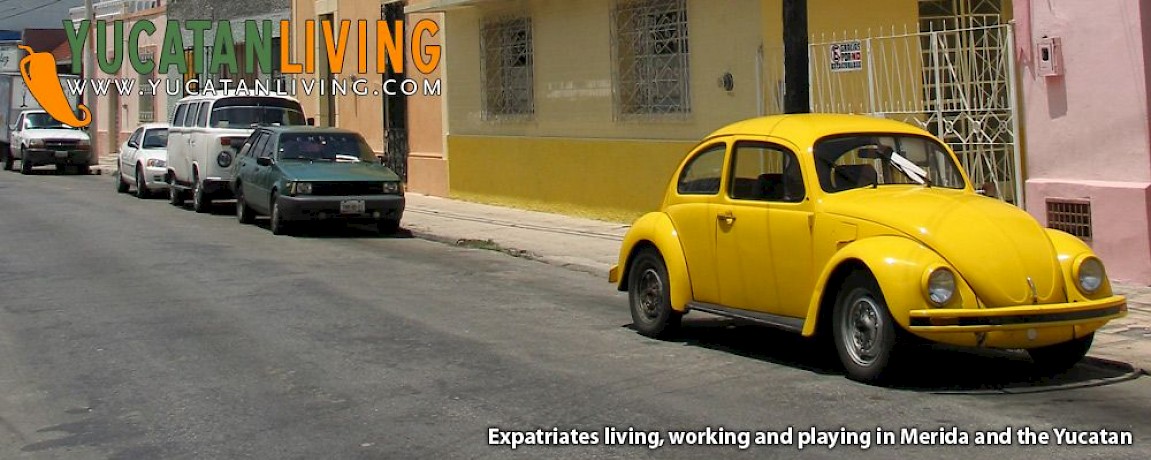
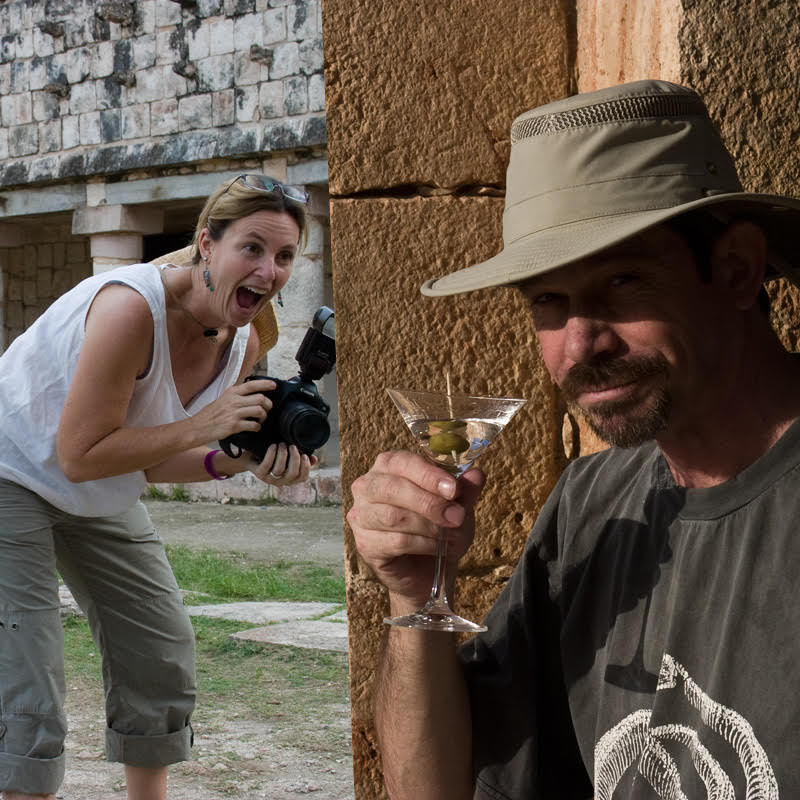

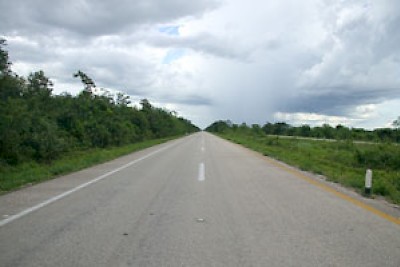
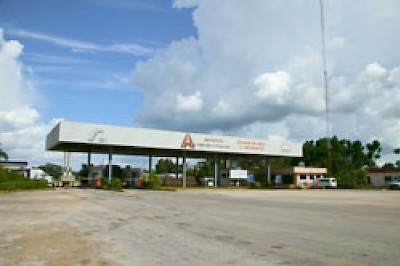

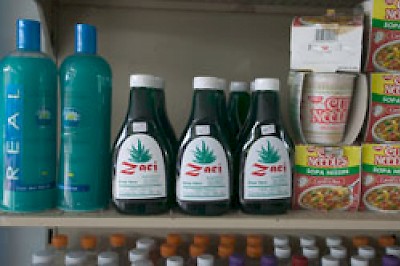


Comments
Chris J 10 years ago
Dear Ellen,
We are finally pulling the trigger and going to vacation and get a feel for real estate in the beach communities outside Merida. We're probably picking one of the worst times of year to come - around Memorial Day - hot!
Question in regards to getting to the Merida area. If we can find cheaper flights from Denver into Cancun, does it make sense to go there and drive a rental to Merida, or just fly into Merida and rent a car there? Should we confine our driving to the daylight hours or is it safe to drive at night? I'm struggling with cost of flight vs. drive time/safety and cost of gas.
Thanks for the great info!
Reply
Working Gringa 10 years ago
Chris, this is always a question. In my experience, however, after spending the money on tolls and gas, or on a bus or driver, the savings for flying into Cancun evaporate. Unless you plan to spend time at the Riviera Maya (definitely a good idea!), there's not much advantage to flying into Cancun. It IS safe to drive at night on some roads... but maybe not for your first visit. So bottom line, I would suggest flying right into Merida. And yes, it's gonna' be hot!!
Reply
Scotty 10 years ago
Great page
We are planning a 10 day car trip around the Yucatan in March and would like some advice/help.
As we are from Australia (and therefore drive on the opposite side of the road) is it possible to hire a car and driver and if so do you have suggestions.
Thanks
Reply
Working Gringa 10 years ago
There are a number of companies that can provide drivers. Two that immediately come to mind are Turitransmerida and William Lawson's driving service (http://www.lawsonsyucatanexcursions.com/)
Reply
Ram undo 10 years ago
Went to Merida last year. Had a good time. We took a cruise to Progresso, and from there a tour bus to Merida. We stopped at the city square and visited a large Catholic Church there. Our guide advised us not to give money to the numerous beggars outside who looked very much in need. I did anyway, to one little old lady. I left wishing I had given more. My question is : Do laws exist which prevent one from giving in this way.
Thanks, Ramundo
Reply
Working Gringa 10 years ago
Ramundo, the ladies who beg outside the Catholic Church in Merida are doing quite well, as we understand it. They fiercely guard their stations there and have been doing it for a very long time. We do not know of any laws that prevent you from giving to them or prevent them from asking.
Reply
Dorit Weisman 10 years ago
Thank you for you detailed descriptions. It is very helpful for us, travelling to rent a car in Yucatan. Is it a possibility to stay overnight in one of the Maya villages? thanks
Reply
ellen 10 years ago
Dorit, I can highly recommend staying at The Pickled Onion in Santa Elena or The Flycatcher Inn, also in Santa Elena. These are two great little hotels, and the town of Santa Elena is charming. It is also fairly close to Uxmal, so you can combine your stay with a visit to that famous archaeological zone.
Reply
Mellisa 11 years ago
Hello to every body, it's my first go to see of this blog; this bloog contains awesome and really fine
data for readers.
Reply
Gene 11 years ago
Rented in mexico last week. Rental company claimed that SLI is mandatory... 4 milllion pesos of coverage is required by law. How to determine how much liability coverage is included in rental price please (before SLI)?
Reply
Kaushal 12 years ago
Hi,
Can any one give feedback about driving from Tulum to Santa Elena/Uxmal. Google maps has this route, but I don't know how accurate is that. It goes south on highway 307 from Tulum then turns north-west on highway 185 in Felipo Carrilo Puerto.
https://goo.gl/maps/XYTFl
Also, sufficient gas stations on the route? Is it reasonable to leave Tulum around 3 pm and reach around 7 in Uxmal/Santa Elena? Things to keep in mind on this particular route?
We just (wife and I) want to explore the country and that's why chose this route.
Thanks,
Reply
(0 to 11 comments)Next »